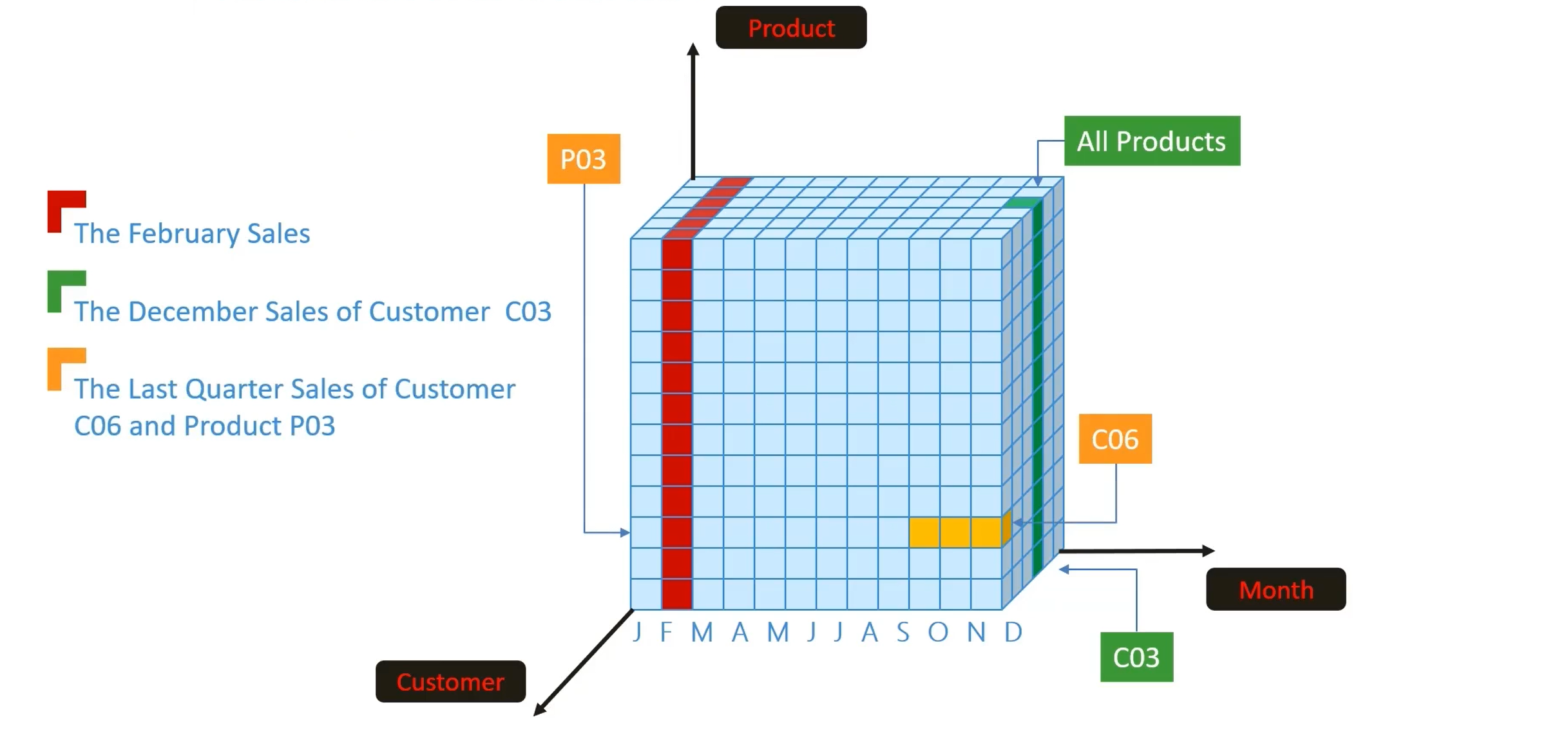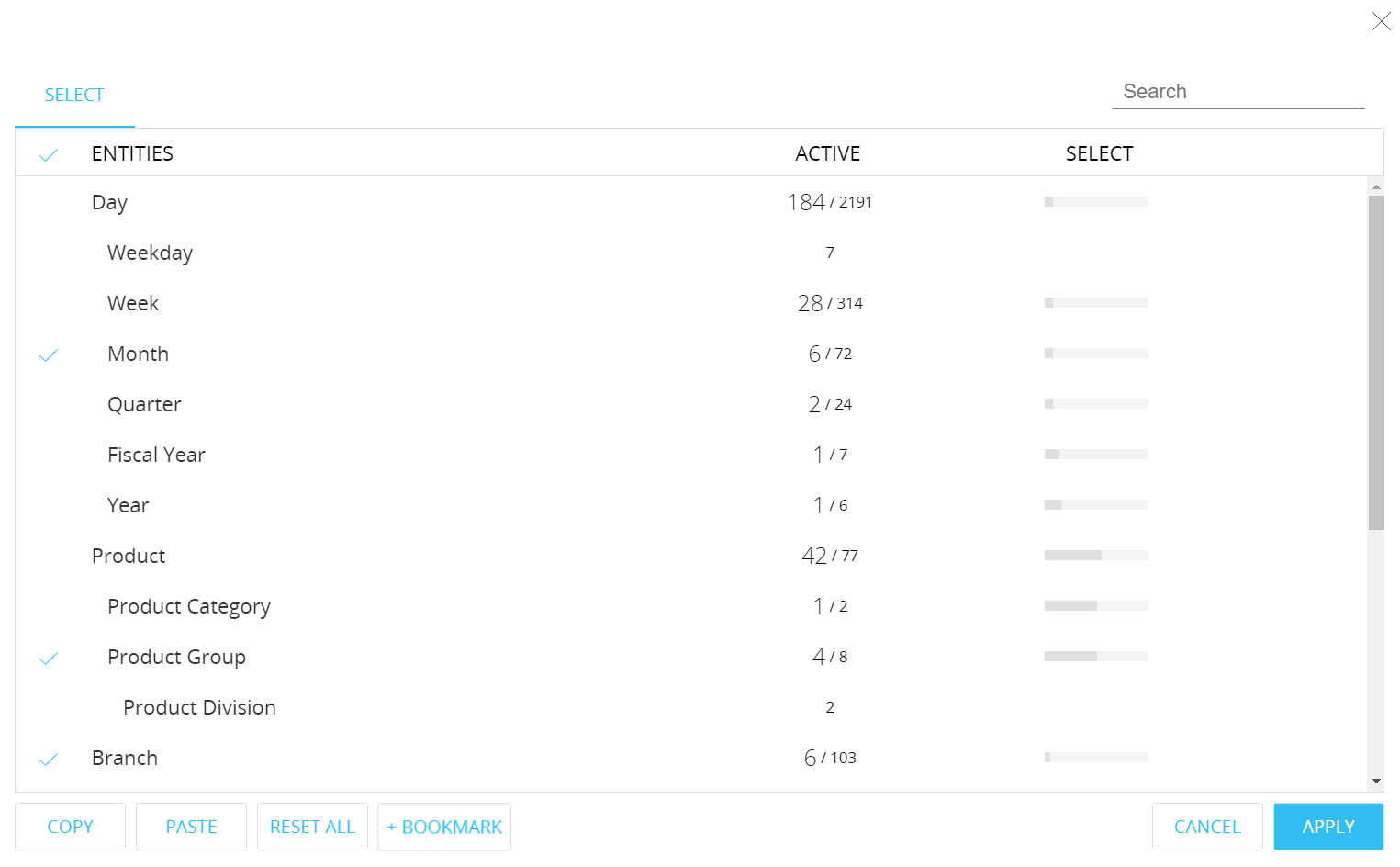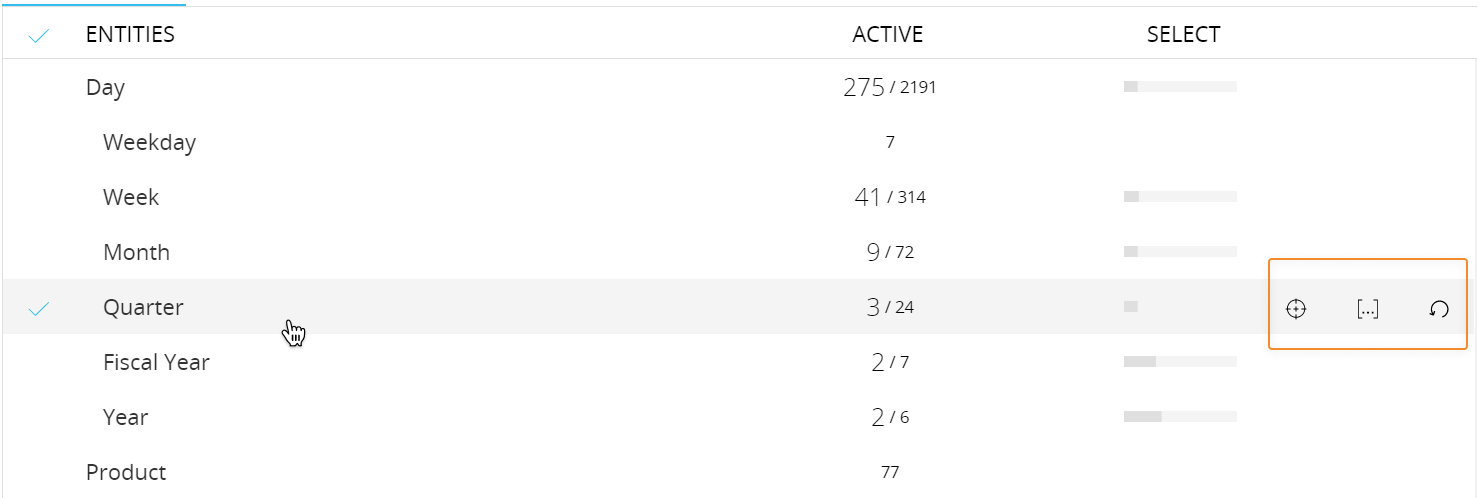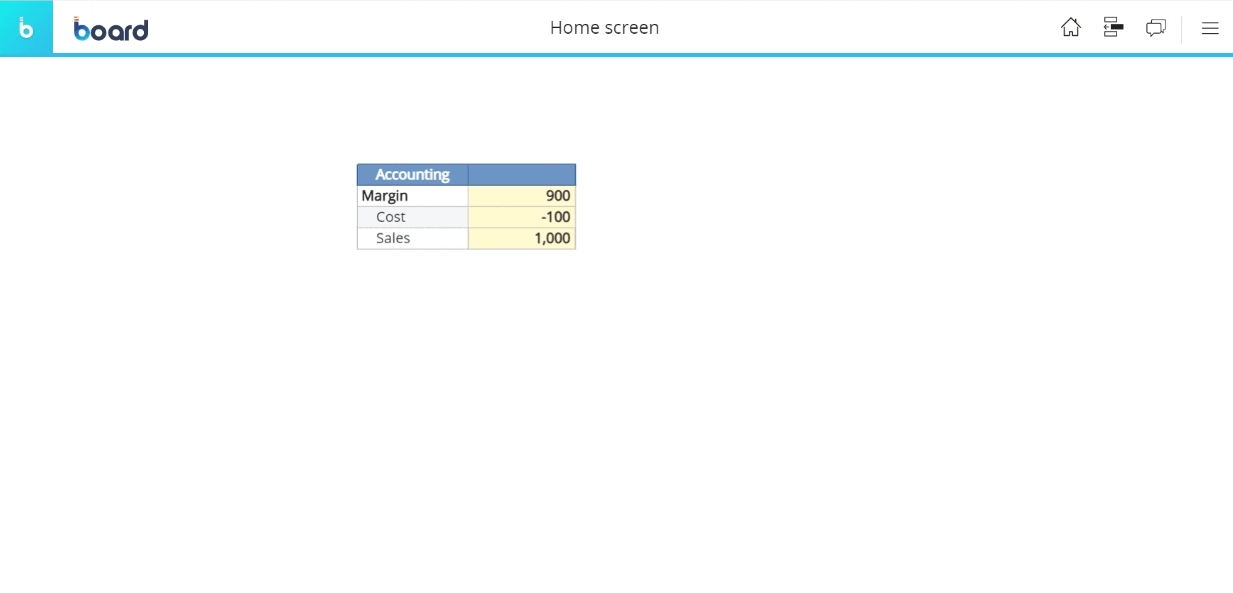About the Select function
The Select function defines which parts of one or more Cubes should be used to retrieve data from. A selection on Entity members reduces data extracted from the Data model to the chosen items only.
For example, by selecting the city of San Diego from the "City" Entity, the data extracted from Cubes will be limited to San Diego only. After configuring a Screen selection, all Screen Objects showing data extracted with a Layout are refreshed.

The Select is a property of a Screen: when a selection is configured, it applies to all Screen Objects, including procedures launched from that Screen.
All Objects automatically inherit the Screen selection in the Layout.
A Select can also be applied to a single Layout of a Screen Object, in order to restrict its data area. See Configure a Layout for more information.
When a selection is made on an Entity which is part of a hierarchy, it is automatically propagated to all Entities of that hierarchy. For example by selecting the city of San Diego from the "City" Entity, the selection immediately affects parent Entities, such as the State of California, down to less aggregated Entities, such as all customers of San Diego.
The Select function is available only when you access a Screen, in Design or Play mode.
To access the Select function in Play mode, click the Select icon ( ![]() ) in the Top Menu. Selections applied in Play mode are temporary, so they won't be saved in the Capsule. However, the end-user can use the Bookmark function to save a custom Select.
) in the Top Menu. Selections applied in Play mode are temporary, so they won't be saved in the Capsule. However, the end-user can use the Bookmark function to save a custom Select.
Capsules developers can prevent end-users from accessing the Select feature by enabling the "Deny selection editor" option under the Screen Properties menu in Design mode.
Any existing Bookmark will be kept and will be available through the Select icon, even if the end-user cannot access the Selection editor.
To access the Select function in Design mode, hover over the burger icon in the Top Menu and click the Select icon ( ![]() ). Selections applied and saved in Design mode become permanent, i.e. the saved Select configuration will always be considered in the Selection application sequence to determine the filtered data that the end-user will see when a Screen is opened.
). Selections applied and saved in Design mode become permanent, i.e. the saved Select configuration will always be considered in the Selection application sequence to determine the filtered data that the end-user will see when a Screen is opened.
Again, the end-user can make and save custom Selects in Play mode using the Bookmark function.
The Select window

- The "ENTITIES" column displays all available entities to be selected. Checked Entities have already had selections made.
The available Entities are displayed in hierarchies.You can easily filter Entities that have selections made by clicking on the blue check mark on the left side of the "ENTITIES" column label. This functionality is particularly helpful when you have a long list of Entities and you want to examine only those that have already had selections made.
- The "ACTIVE" column displays the Entity members affected by the current selection against the total number of Entity members.
A member is defined as "active" when it's selected as a result of a selection made on another Entity. The Selection on active members can change dynamically, for example when new data is imported in the Data model.
A member is defined as "selected" when it's selected by hand or through a Procedure. The Selection on selected members is fixed and won't change dynamically.
Example
If you manually select the city of San Diego from the "City" Entity, the "San Diego" member is the selected member in that Entity. As a result of that Selection, five customers will be selected in the "Customer" Entity: those customers are active members of the Selection.
If new customers are acquired in San Diego, then the number of active members in the "Customer" Entity will automatically increase when those new customers are imported in the Data model.
Conversely, if five customers are manually selected in the "Customer" Entity, the number of selected members in that Entity will never change dynamically. - The "SELECT" column displays the percentage of Entity members affected by the current selection against the total number of Entity members.
The Search feature in the upper right corner of the window will list all available Entities matching the search term as you type it.
The buttons at the bottom left corner of the Select window will allow you to:
- Copy the Select configuration in the clipboard
- Paste a previously copied Select configuration in the currently open Select window
You can paste a Select configuration only on the same Data model you copied it from. This is useful, for example, when you want to apply the same selection to various Screens or Layouts.
The Copy/Paste function works only within the same Board Platform. - Reset the entire Select configuration (no selection applied)
Additional options
When you hover over the available Entities, additional options will appear at the right side of the "SELECT" column.

Those options are:
- Focus. Allows you to reset the selection in the hierarchy, while the contents of the selected Entity remain fixed
See The Focus function for more details - Dynamic selection. Allows a dynamic selection based on the current period or based on data in other cubes
See Dynamic selection for more details - Reset. Resets the selection on this Entity (available only for checked Entities)
Resetting the selection on an Entity belonging to a hierarchy also automatically resets all selections propagated to all Entities of that same hierarchy.
Screens associated with multiple Data models
If the currently open Screen is associated with more than one Data model, the Select window will display one tab per Data model, each containing the Select function for a specific Data model. A Selection applied to a Data model does not affect other Data models: each Select always applies to only one Data model.
The "COPY", "PASTE" and "RESET ALL" buttons at the bottom left corner of the Select window will refer only to the selected Data model.
In the following image, the Select window shows two Data models associated with the currently open Screen. The Select, in this case, will be applied to the "DOMAINS" Data model highlighted in blue.
The "NORTHWIND" Data model will retain its Select configuration.
.png)
How the Select window works with unbalanced hierarchies
In the selection window, the Entity that contains the unbalanced hierarchy will be shown as a tree diagram.
Click on the small arrow next to a node to expand it, then tick the checkbox next to the Entity member that you want to add to the selection.
The search function in the upper right corner of the window will display the searched member and all parent-child relationships involving it.
There are also special Select options that can be used on a single entity member of an unbalanced hierarchy:
- Descendants
- Children
- Leaves
- Ancestors
- Parent
- Siblings

These selections are dynamic: any modification to an unbalanced hierarchy will be reflected in all affected Selects.
For example, if the number of children of a particular member changes and a Select includes those children, the Select will self-update automatically to include or exclude members accordingly.
All these features are also available in the vertical and pop-up selector. They can also be used in Layout Selects, Procedures Select, Screen Selects and Security Selects.
Selections application sequence (Select at runtime)
It's important to understand the order in which Board executes selections on each Screen, as this sequence determines the data that will be displayed to the end-user.
When a user opens a Screen, the following sequence of actions is performed in this very exact order:
- The security selection is applied
These selection criteria can be defined for each single user or through security profiles that might include selections configured for each existing Data model.
These security settings can be configured in the System Administration section and in the Database security sub-section of each existing Data model.
For Cloud customers, these security settings are also configured in the System Administration section and in the Database security sub-section of each existing Data model, but they are applied to users via the Users section of Board's Subscription Hub. - Any dynamic selection on Time Entities is applied
- The static Screen selections are applied (i.e. Entity selections applied and saved at the Screen level by Capsules developers in Design mode)
- Any dynamic selection on Non-Time Entities is applied
If there are multiple dynamic selections on different Entities, they are executed in the order they are saved during configuration.
- Any Layout selection is applied
- Layouts in the Screen are executed based on the filtered data
The results of the sequence described above is also called "Select at runtime" and it's always applied whenever the end-user opens a Screen.